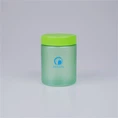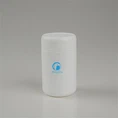When you buy prescription drugs, over-the-counter tablets, or dietary supplements, they often come in specific containers designed to protect their quality and make them easy to use. But have you ever wondered-what is a medicine bottle called?
The Common Names for Medicine Bottles
The term medicine bottle is widely used in everyday language, but in the pharmaceutical and packaging industries, these containers can go by several other names, depending on their design and purpose:
Pill Bottle – A small plastic or glass container used for holding tablets, capsules, or pills. Common in pharmacies for prescription drugs.
Prescription Bottle – Specifically refers to bottles dispensed by pharmacists with prescription labels.
Tablet Container – Used more broadly in manufacturing and wholesale packaging to describe bottles for solid medicines.
Pharmaceutical Bottle – An industry term for bottles used to store both prescription and non-prescription medication.
Supplement Bottle – Often used for vitamins, minerals, and herbal products, which share similar designs with medicine bottles.
Materials Used for Medicine Bottles
Most modern medicine bottles are made from HDPE (High-Density Polyethylene) or PET (Polyethylene Terephthalate). These plastics are lightweight, impact-resistant, and safe for storing pharmaceuticals. Glass bottles are still used for certain liquid medications or sensitive products, but they are less common in mass-market pill packaging.
Key Features of Medicine Bottles
Medicine bottles are not just ordinary containers-they are designed with features to protect both the product and the user:
Child-Resistant Caps – To prevent accidental ingestion by children.
Tamper-Evident Seals – To show if the bottle has been opened before purchase.
Light-Blocking Material – Amber or opaque bottles help protect medicines from UV light.
Moisture Barriers – Some bottles have special liners or desiccants to keep tablets dry.
Why Naming Matters in the Industry
In manufacturing and wholesale supply, the exact term matters for ordering the right product. For example, a "120cc HDPE pill bottle with child-resistant cap" is much more precise than simply saying "medicine bottle." This ensures clarity between suppliers, manufacturers, and customers.
















